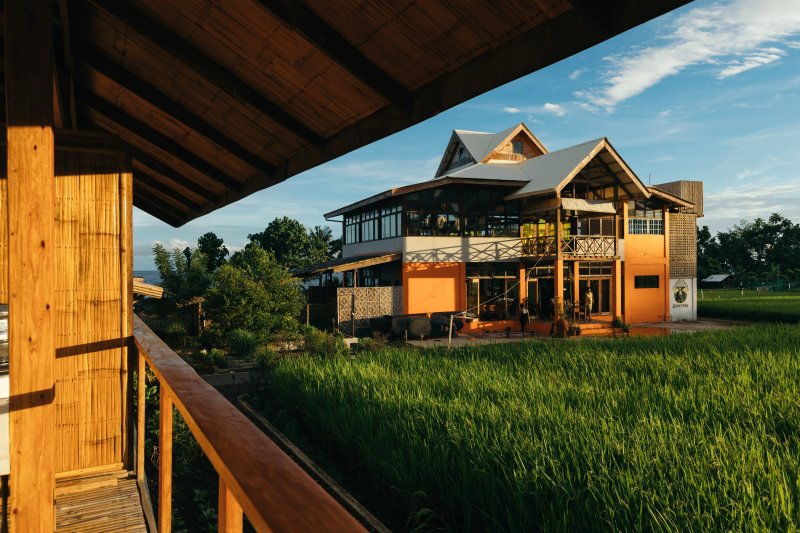Outfitted in a stained beige chef’s jacket and black shorts, Guerrera Restaurant chef and owner Carmel Almadrones was right in the middle of lunch service when she remembered something important. She was completing the orders of a party of 12 who had driven in from another town to sample the restaurant’s Asian fare. Half of the dishes had already been sent out when she realized that she needed more sesame leaves for her mieng kam. In a flash, her assistant RC ran out the back door and grabbed some. Not long after that, Carmel brought the last plate to the table, receiving praise and validation from the customers in return.
Had it played out in the metro, the situation might have caused panic and trouble. But as her restaurant is situated on an island, guarded by the lone active one of Camiguin’s seven volcanoes, and sandwiched between a well-kept farm and a healthy rice paddy, shopping for missing ingredients isn’t a cause for worry. It is quite the norm, actually.
Carmel picks the kaffir lime leaves and calamansi for her desserts, and squeezes the milk of the shredded coconut meat by hand for her Indonesian rendang only upon order. Seafood is caught by the local fisherfolk on the day it’s eaten, and the rice for the lemongrass pork Thai basil fried rice is harvested from the patch of land found right in front of the restaurant.
Starting anew
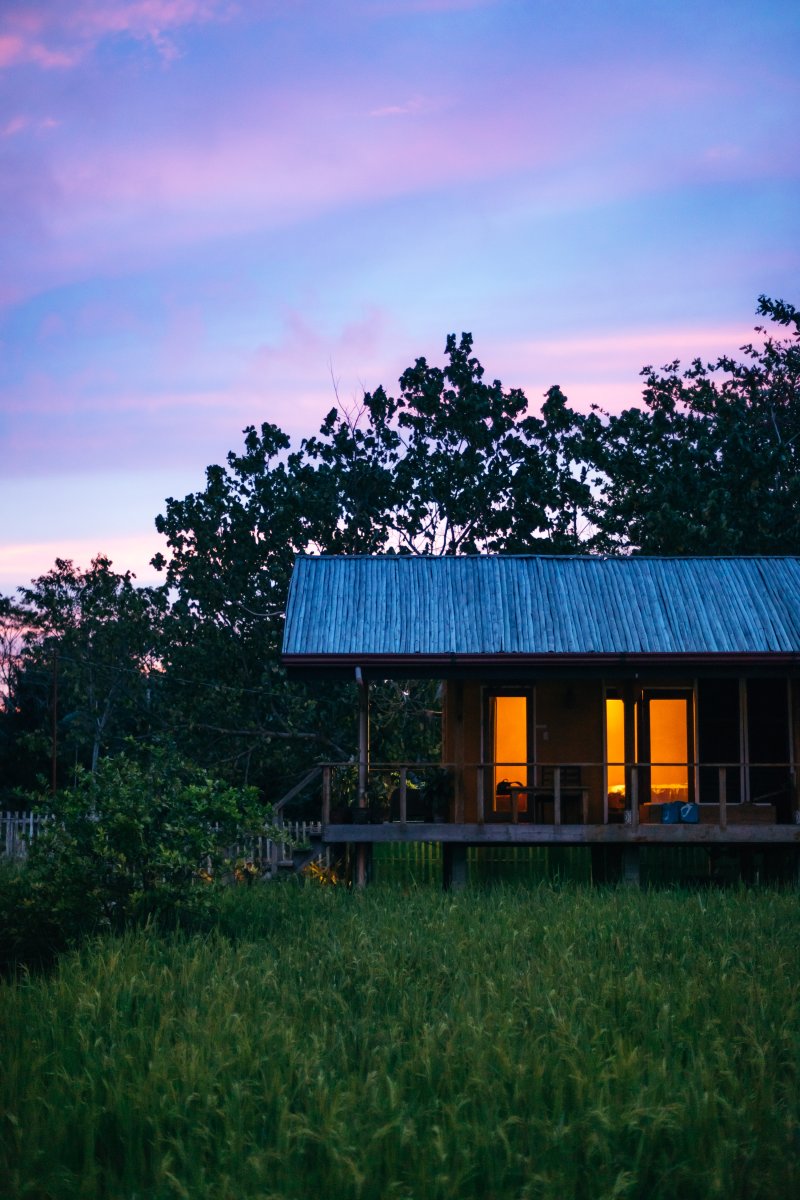
Guerrera is the very definition of a farm-to-table restaurant. And it’s something owners Mark and Carmel Almadrones have long dreamed of. The goal was to run a sustainable restaurant at a beach location. They went to Bohol, Bantayan, Malapascua, and the Camotes to scout for a possible location. “Camiguin wasn’t really on the map when we first had the idea,” says Mark. “It only had an overnight boat from Cebu; it took around 12 to 14 hours of travel and there’s not a lot of people yet during that time. But we found ourselves coming back and that’s where we were the happiest among all the places we went to because it wasn’t that developed yet.” They eventually saw how this could benefit them and so they bought the lot, and, well, sat on it for four years.
But as Guerrera is situated on an island, guarded by one of Camiguin’s seven volcanoes, and sandwiched between a well- kept farm and a healthy rice paddy, shopping for missing ingredients isn’t a cause for worry.
“It took a few years to build the main structure because we told the architect that she had time since we were so preoccupied with what went on in Cebu,” says Mark. During that time, they were operating Little Saigon, Big Bangkok Restaurant, a Viet-Thai restaurant located along Maria Luisa Road. It took two and a half years before they realized that unless they chose between Cebu or Camiguin, then their dream would never really take form. So after another year and a half of unwinding and closing their promising food business, the couple finally set their sights on island living.
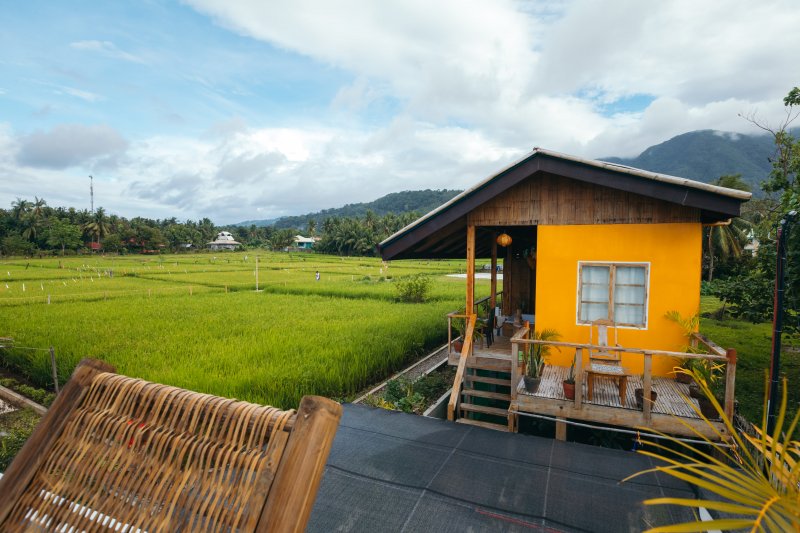
Though they’re escaping the trappings of an urban city, the challenges haven’t left them. Building on a wet rice paddy was difficult and time-consuming. The foundation for the two-story structure had to be extra deep to be stable, and they had to figure out how to get water to their facility. “Basically, a lot of the things we didn’t know about,” says Carmel. “But we were learning every day. We made one major mistake and that was not being there during the construction.” Still, the two soldiered on and didn’t lose sight of the end goal. “We were working hard to get there, that was our motivation,” says Mark. “When it was finally built, we had an incredible feeling. It was like… at last.” Opening and maintaining the restaurant, which is usually the hardest part of an endeavor, proved to be the easiest part since they had already been doing it for years, and on a much bigger scale.
It took the couple six years to actually build, run, and live the “dream.” Whereas back in Cebu everything was happening so fast, being in Camiguin has put life in better perspective, giving worth to the things that matter more
“We had our share of mistakes but we would be damned if we didn’t learn from most of them,” adds Mark. “Our identity came out of those mistakes. We needed it. Had we hired people to do the job, we would have been less exhausted. But the sense of accomplishment and personal pride we got, now that was more invaluable.”
Guerrera, food-wise
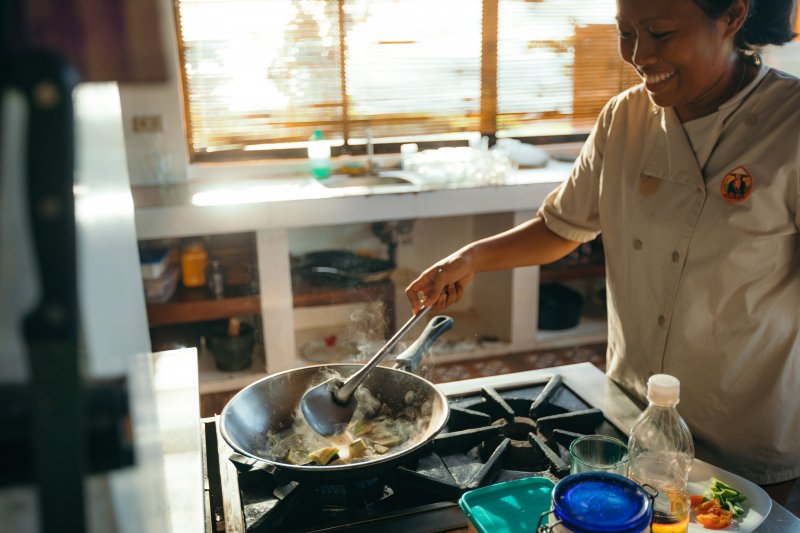
At the heart of the restaurant is Carmel, who never thought of being a chef to begin with. She just felt the need to cook as part of a doting wife’s responsibility to her husband. But every night, Mark witnessed flair, not chore. “She’s got so much talent in her fingers. She has a gift. I have to practice a lot more to get to that level,” he says.
Carmel obliged to nurture what he saw in her and so she enrolled at Le Cordon Bleu in Bangkok, Thailand, not just for proper culinary education but also to earn the confidence to run a professional kitchen.
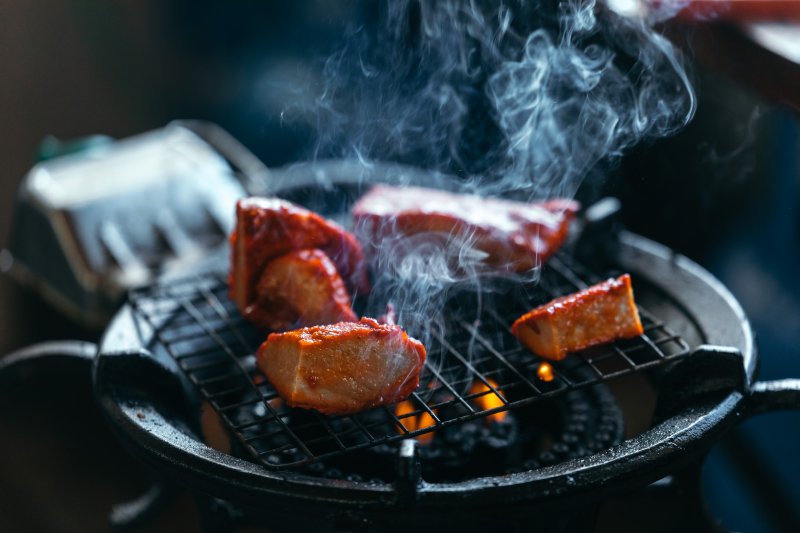
In 2014, Guerrera began operations. It has become known for its fine Asian street food, borne out of the cuisine Carmel has taken a liking to. There’s banh xeo, Vietnamese crispy shrimp and pork crêpe with lettuce, herbs and dipping sauces; and her take on the Thai classic, pad thai noodles. She also has a blackboard menu with a list of her specials that changes every now and then. On it recently was the char siu, which was inspired by the couple’s trip to Hong Kong, and a banh mi composed of ciabatta baked by a German living on the island and tender pulled pork shoulder cooked using their smoker.
Her kitchen, although void of the technology and conveniences of cooking equipment that restaurants typically have, is equipped with things big-name chefs would envy—an ocean view, reliable assistants in the form of cousins Cha-cha and Jay, a well-maintained backyard housing a myriad of crops and herbs, and a rice paddy where the restaurant sources its rice.
The rice paddy has become quite an attraction, one of Guerrera’s major draws. The couple admits that they even get online inquiries about when the rice harvest will be so that travelers can time their visits to coincide with it. “When we get guests that are staying with us, they’d come in and most of the time, they have an agenda to see the island. But soon as they get unpacked and open their door, most of the time, their plan goes out the window,” says Mark.
It’s definitely a luxury, she says of her farm, but it’s not only a matter of having fresh ingredients at her disposal, it’s also investing in them. “I planted the calamansi tree and some of the plants you see there myself.” The hands-on chef could have easily asked her helpers to handle the dirty job, but she prefers being present and involved throughout the whole process—from sowing and harvesting to cooking. She has the privilege of picking fresh ingredients at her preferred ripeness, running a sustainable kitchen operation, and best of all, dictating her kind of play, since she’s not at the mercy of suppliers, something that can be tricky when working on an island.
Rise to the occasion

Like the food they offer, the villas were inspired by the couple’s travels. “We had a vacation in Bali where we saw a rice paddy and I said I wanted to have something like that. That’s how our concept for this was born,” says Carmel. “It’s so peaceful. I lived in Talamban (north of Cebu) where it was always crowded and the land was mostly used to grow corn. When I look at it, it just makes me relax. It’s calming, even more than the beach. And when I see people working on the field, I find it to be a nice scene.”
Their one-hectare lot in Mambujao sits on a very strategic location—the paddy is just the right size; Mt. Hibok-Hibok, Camiguin’s only active volcano, lends a commanding presence on a clear day; and the famous white island can be seen from a short distance.

Setting up a lodge was part of the original plan, but it was put on the back burner to give way to the restaurant. When suggestions from guests persisted, they knew that they had to seize the opportunity. “Visitors who were staying elsewhere kept telling us, ‘Look, we’ve eaten in your restaurant three times out of the last four days, it would be great if we didn’t have to take a tricycle down here.” The villas began housing people in 2016.
The rice paddy has become quite an attraction, one of Guerrera’s major draws. The couple admits that they even get online inquiries about when the rice harvest will be so that travelers can time their visits to coincide with it. “When we get guests that are staying with us, they’d come in and most of the time, they have an agenda to see the island. But soon as they get unpacked and open their door, most of the time, their plan goes out the window,” says Mark. “Especially when they have a glass of wine at hand,” adds Carmel.
Long time coming
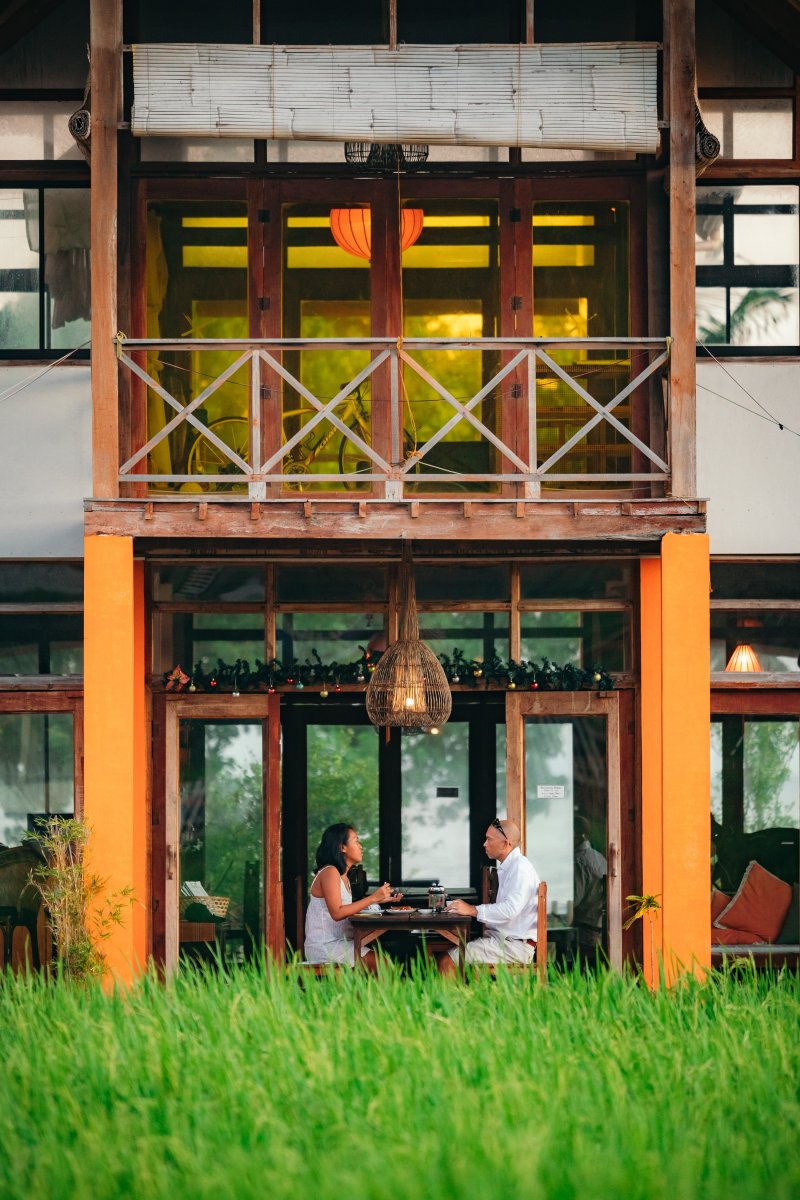
It took the couple six years to actually build, run, and live the “dream.” Whereas back in Cebu everything was happening so fast, being in Camiguin has put life in better perspective, giving worth to the things that matter more.
“For four to five years, we hardly took a time out and traveled. And when we did, we were constantly checking our phones. It just wasn’t right. Now, we don’t even think about the hours we put in because we love what we’re doing. There’s a lot of effort put into it but it never feels like hard work. We have our lives back.”
From the beginning, it was clear what they wanted out of this—to be able to spend more time with each other and their respective families. For the first time, Guerrera will shut down operations this June and July as they jet off to the US to see loved ones, find food inspiration, and more importantly, make up for lost time.
Originally published in F&B Report Vol. 15 No. 2





